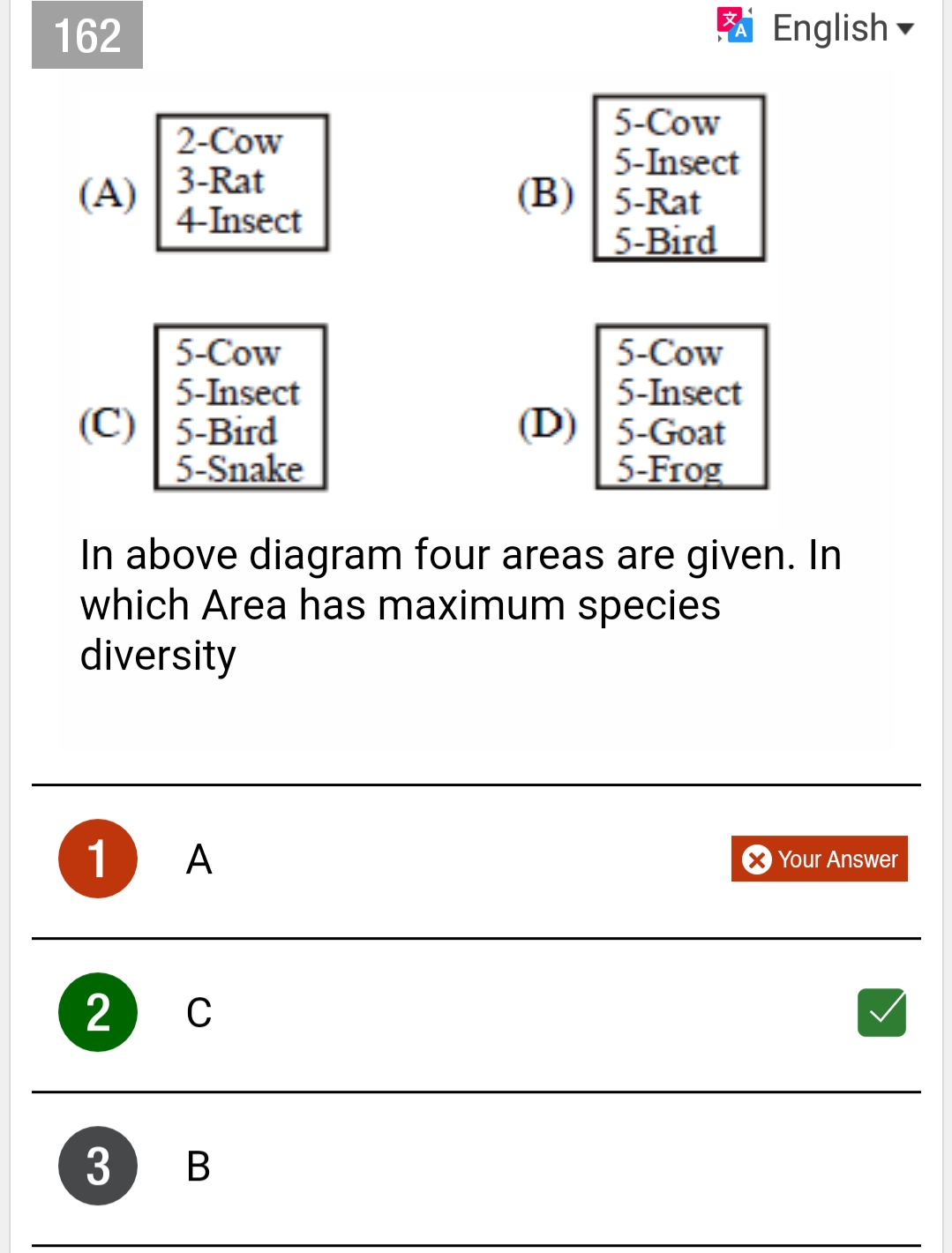NEET Class neet Answered
WHICH OF THE FOLLOWING PYRAMID OF NUMBERS IS NOT UPRIGHT
1 POND ECOSYSTEM
2 FOREST ECOSYSTEM
3 DESERT ECOSYSTEM
4 TREE ECOSYSTEM
EXPLAIN THE PYRAMID OBTAINED FOR EACH OPTION
YOUR ANSWR IS TREE ECOSYSTEM BUT AS THE PRODUCERS ARE MAXIMUM THEN HOW INVERTED PYRAMID IS POSSIBLE THE PYRAMID SHOULD BE UPRIGHT AND WHAT IS THE DIFFERENCE BETWEEN A TREE AND AFOREST ECOSYSTEM . THE ANSWER FOR INVERTED PYRAMID SHOULD BE DESERT ECOSYSTENM BECAUSE IN CASE OF DESERT THE FAVOURABLE CONDITIONS FOR PHOTOSYNTHESIS ARE NOT AVALIABLE THEN THE PLANTS WHICH CAN GROW ARE ONLY XEROPHYTIC
Asked by pardeepkumar2281 | 19 Jan, 2019, 07:11: PM
- Pyramids of numbers show the relationship between producers, herbivores, and carnivores at successive trophic levels in terms of their number.
- Pyramid of numbers is always upright in case of pond, grassland, forest ecosystem, Trees are a part of the forest ecosystem.
- However, in a parasitic food chain, the pyramids are always inverted. This is due to the fact that a single plant may support the growth of many herbivores and each herbivore, in turn, may provide nutrition to several parasites which support many hyperparasites.
- Thus, from the producer towards consumers, there is a reverse position, i.e. the number of organisms gradually shows an increase making the pyramid inverted in shape.
- In the desert ecosystem, the favourable conditions for photosynthesis are not available. As a result, only xerophytic plants would grow. Since they are the only supporting producers in the desert ecosystem, their number would go on decreasing rapidly forming an inverted pyramid of numbers.
Answered by Sheetal Kolte | 21 Jan, 2019, 06:52: PM
NEET neet - Biology
Asked by valavanvino1011 | 08 Sep, 2019, 06:41: PM
NEET neet - Biology
Asked by patra04011965 | 02 Jun, 2019, 12:30: AM
NEET neet - Biology
Asked by Sachinbajantri64 | 13 Feb, 2019, 07:36: AM
NEET neet - Biology
Asked by deepakudgiri29 | 07 Feb, 2019, 06:33: PM
NEET neet - Biology
Asked by pardeepkumar2281 | 19 Jan, 2019, 07:11: PM


